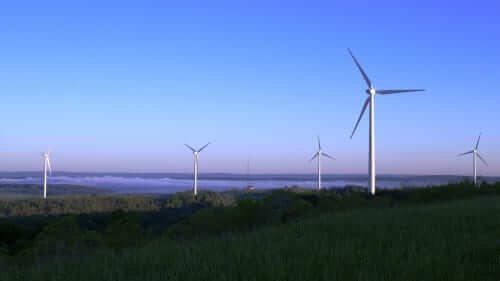Wind power: Cleaner air and healthier communities
We all want to be sure that our communities are safe, clean places to make our homes and raise our families.
A new report presents real-world findings that wind power helps make this possible.
The Lawrence Berkeley National Laboratory (LBNL) and the National Renewable Energy Laboratory found that renewable energy saved between $2.6 and $9.9 billion in 2013 by reducing harmful air pollutants like sulfur dioxide, particulate matter and nitrogen oxides.
Cleaner air from increased use of renewable energy prevented between 120 and 1,100 premature deaths in 2013 alone.
The Mid-Atlantic, Great Lakes, Northeast and Texas realized the greatest health benefits, according to the study, though cleaner air will aid all Americans.
“It has to do with fewer people getting sick and dying because you’re not putting so much pollution into the air,” explained Galen Barbose of LBNL. “Those benefits—just on their own—are seemingly far greater than the costs, not even taking into account all of the other potential benefits.”
LBNL estimates that greater renewable energy usage in 2013 also prevented as many as 290 emergency room visits for asthma, 310 hospital admissions for respiratory and cardiovascular complications, 560 non-fatal heart attacks, and 64,000 work days missed.
The Department of Energy’s Wind Vision report found that growing wind power could have an enormous positive impact on public health as well. Through 2050, wind can prevent up to 21,700 premature deaths, over 10,000 asthma-related emergency room visits and nearly 2.5 million missed school days. The cumulative savings for this improved health exceed $100 billion.
The public health benefits of wind power have been found in prior analyses as well, including in a report by the National Academy of Sciences back in 2009 and an August 2015 study published in the journal Nature Climate Change.
Wind power also cuts mercury pollution by helping reduce coal burning, though the benefits were not quantified in the NREL and LBNL report. The Environmental Protection Agency’s website further examines the health impacts of mercury, sulfur dioxide, particulate matter and nitrogen oxides.
Wind provides these public health benefits on top of creating thousands of well-paying jobs, saving consumers money on their electricity bills, and being the biggest, fastest, cheapest way to cut carbon pollution.
As these numbers show, expanding America’s usage of clean, pollutant-free wind power helps ease our minds about our communities’ safety.





